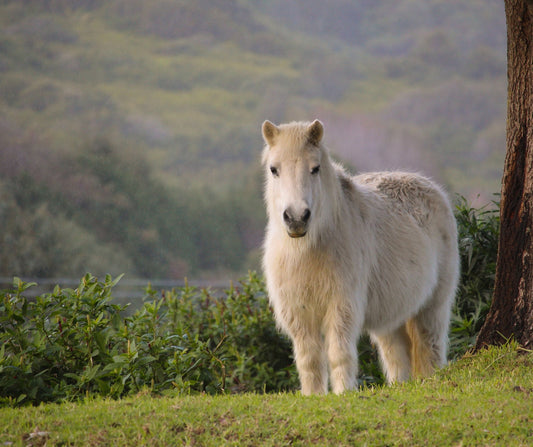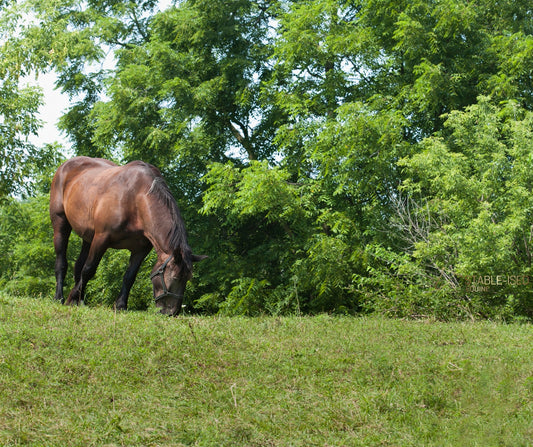Horses constantly produce gastric acid regardless of whether they have food matter in their stomach or not.
Horses will only produce saliva while physically masticating (chewing).
When given unrestricted access, the average horse will graze for around 16 hours total per day.
The stomach of a horse is quite small in relation to the size of the animal and makes up only 10% of the capacity of the digestive system.
So what does all of this information combined actually mean?
Horses are what we refer to as ‘trickle feeders.’ They are physiologically designed to be ingesting and digesting roughage almost continuously. To maintain weight, the average horse needs to consume approximately 2% of their body weight in (ideally) long-stemmed roughage daily.
As horses have evolved this way, they have never needed to ‘not’ produce gastric acid because it is vital in the first stages of digestion. Additionally, as horses (should) always have feed matter in their stomachs, the non-glandular region of their stomach has never required additional protection from gastric acid because the ingested food acts as a mat across the lower portion of the stomach which prevents acid from splashing up into the unprotected region.
Equine saliva is full of vital digestive enzymes which aid in the enzymatic break down of ingested feed. This is why longer-stemmed roughage such as pasture or hay is preferential to finely chopped roughage sources such as chaff; they simply require longer mastication times which = more saliva production which = better digestive health.
The modern-day domestic horse often receives larger than necessary hard feed meal portions. A meal that exceeds the capacity of a horse’s stomach risks tipping into the small intestine prematurely. This can result in reduced feed efficiency, reduced nutrient utilisation, and reduced digestive health. Where large concentrations of starch are fed, anything that is not digested in the foregut will enter the hindgut where it can severely upset the microbial fermentation process and induce problems such as hindgut acidosis, colic, and laminitis.
Studies have shown that horses left as little as 4-5 hours without access to food can develop Equine Gastric Ulcer Syndrome. Horses do not ‘need’ ad libitum access to forage, particularly if metabolic conditions or obesity are at play, however their forage intake should be managed appropriately so that their required forage total is portioned out during a 24-hour period without the horse spending more than 4-5 hours without any food at all.




